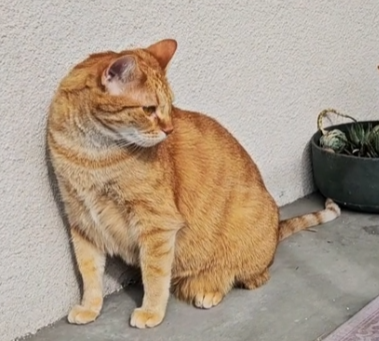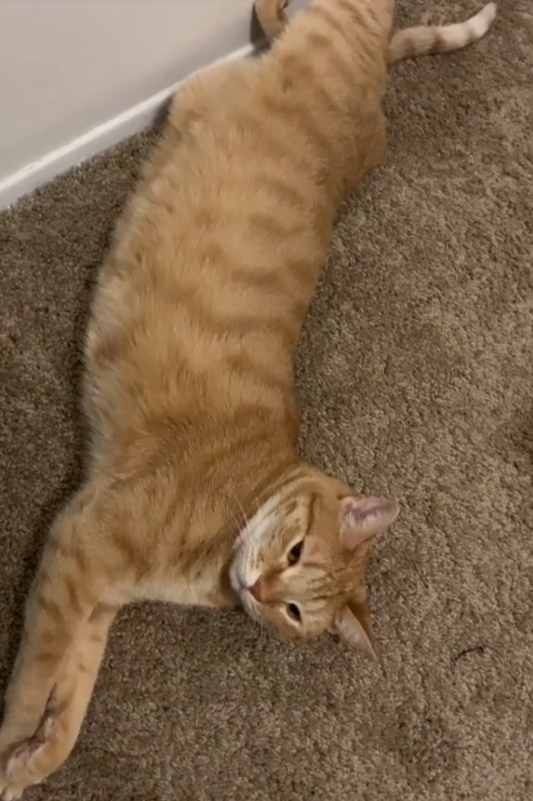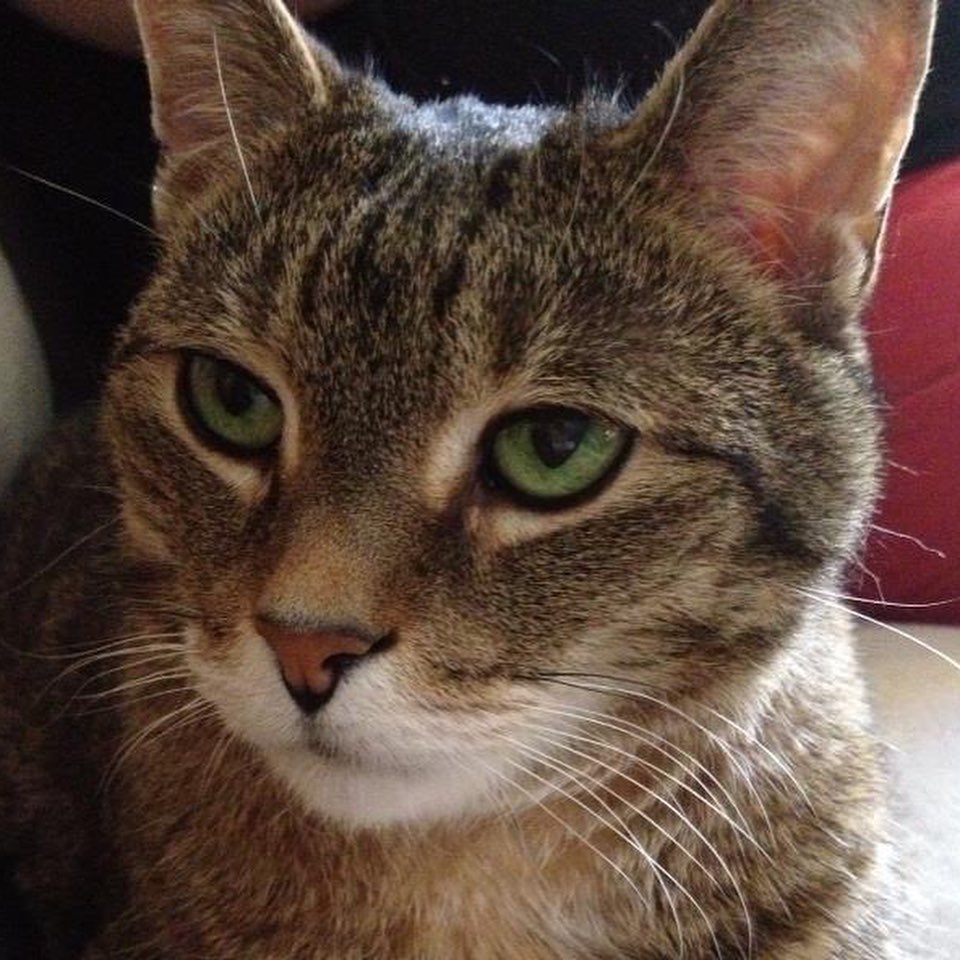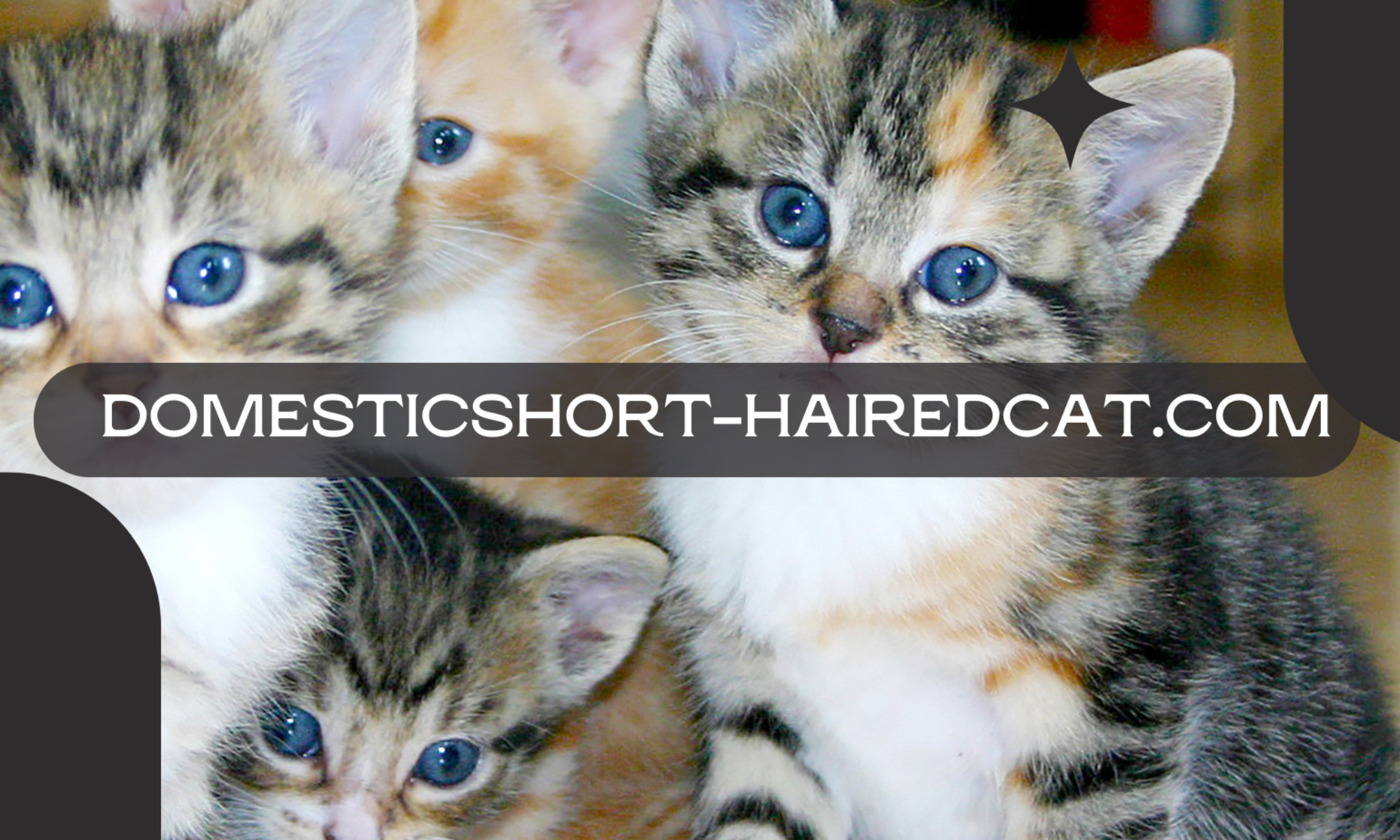The first time I heard the term ‘ticked cat’, I thought someone was referring to an angry, pissed off cat. However, I soon found out that ticked cats are a unique type of feline that have a distinct coat pattern caused by a genetic mutation.
This mutation causes each hair on the cat’s fur to have alternating bands of different colors, resulting in a speckled or flecked appearance that is not only aesthetically pleasing but also serves a practical purpose.
Ticking is most commonly seen in breeds such as the Abyssinian, Somali, and Ocicat, but can also be found in other breeds and mixed-breed cats.

Why Do They Refer to this Pattern as “Ticked”?!
The term “ticking” comes from the English word “tick,” which refers to a small parasite that attaches itself to an animal’s skin. Ticked cats are not related to ticks in any way, but the term was used to describe the speckled appearance of their coat.
The ticking pattern can vary in intensity and color, ranging from subtle flecks to bold stripes, and can be found on any part of the cat’s body, including the face, legs, and tail.
While the ticked coat pattern is unique and visually striking, it is not the only characteristic that sets ticked cats apart from other feline breeds.
Ticked cats are known for their high energy levels, intelligence, and affectionate personalities. They are also highly adaptable and can thrive in a variety of living situations, making them a popular choice for cat owners around the world.
The Basics of Ticked Coats
In this section, I will explain the basics of ticked coats, including how they work and the genetics behind them.
Understanding Ticked Fur
Ticked fur is a coat pattern where individual hairs have bands of different colors. This gives the fur a speckled or flecked appearance, and the overall effect can be quite striking. As mentioned earlier, ticking is seen in several cat breeds, including Abyssinians, Somalis, and Ocicats.
Ticked fur is different from tabby fur, which has stripes or blotches. Ticked fur can have a tabby pattern, but it is not always present.
Instead, ticked fur has agouti hairs, which are individual hairs with bands of different colors. These bands are caused by the agouti gene, which controls the distribution of pigment in the hair shaft.
Genetics of Ticking

The genetics of ticking are quite complex, and several genes are involved in producing the ticked pattern. The main gene responsible for ticking is the Taqpep gene, which is dominant and inherited from one or both parents. This gene produces a protein that creates the speckled appearance of ticked fur.
Other genes involved in ticking include the agouti gene, which controls the distribution of pigment in the hair shaft, and the tabby gene, which produces stripes or blotches in the fur.
The interaction between these genes can produce a variety of coat patterns, including ticked tabby, solid ticked, and ticked with white.
Ticked Coats and Cat Health
Ticked cats have some of the most unique and stunning coat pattern that requires special care to maintain its beauty. In this section, I will cover the grooming and health considerations for ticked cats.
Coat Care and Grooming
Regular grooming is crucial to prevent matting and distribute natural oils throughout your cat’s coat. Brushing your cat’s fur at least once a week with a soft-bristled brush is essential for ticked cats. It is also recommended to use a comb to remove loose hair and prevent hairballs.
Ticked cats have a delicate coat, and it is crucial to avoid using harsh shampoos or conditioners. Instead, use a mild shampoo and conditioner specifically formulated for cats. Additionally, it is essential to check your cat’s coat regularly for fleas, ticks, or other parasites.
Living with a Ticked Cat
Ticked cats are known for their unique coat pattern, but they also have distinct personalities. In this section, I will discuss what it’s like to live with a ticked cat and what you can expect from their behavior and temperament.
Ticked cats are known for being friendly and affectionate. They are often described as playful and curious, making them great pets for families with children.
However, it’s important to note that each cat has its own personality, so not all ticked cats will have the same temperament!
One thing to keep in mind is that ticked cats are highly social animals. They thrive on human interaction and love to be around people. If you are someone who is away from home for long periods of time, a ticked cat may not be the best pet for you.
These cats can become bored and lonely if left alone for too long, which can lead to destructive behavior.
How can you identify a ticked tabby cat?

Identifying a ticked tabby cat is relatively easy. Ticked tabbies have a coat pattern that features agouti hairs with alternating bands of color. This gives the coat a salt-and-pepper appearance.
The fur is evenly colored with no distinct markings, and the hair shafts have light and dark bands of color. The ticking pattern is most prominent on the cat’s legs, tail, and face.
What is the difference between ticked, spotted, and classic tabby patterns?
Ticked tabby cats have a coat pattern that features agouti hairs with alternating bands of color, while spotted tabby cats have spots or blotches on their coat.
Classic tabby cats have a coat pattern that features bold, swirling patterns. The coat of a ticked tabby cat is more uniform in color than that of a spotted or classic tabby cat.
Are ticked tabby cats a common occurrence?
Ticked tabby cats are not as common as other tabby patterns, such as classic or mackerel. However, they are not rare either.
Which cat breeds are known for having a ticked coat?
The Abyssinian is the most well-known breed of cat with a ticked coat.
Other breeds that commonly have a ticked coat include the Somali, Singapura, and Egyptian Mau. However, ticked coats can occur in any breed of cat, and even in domestic shorthair cats.
